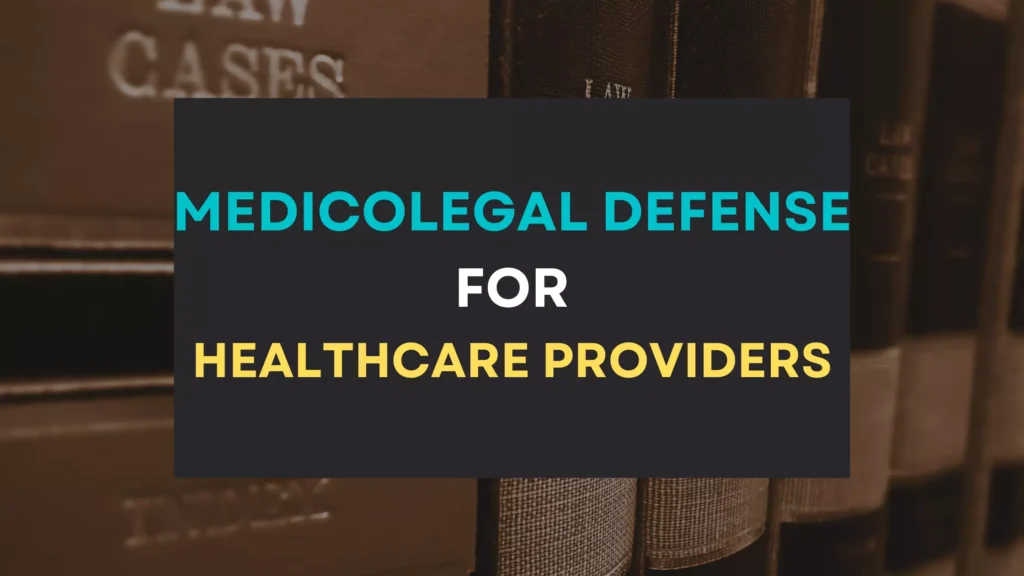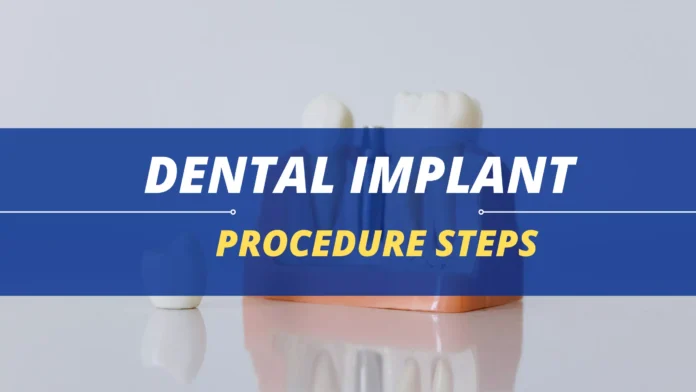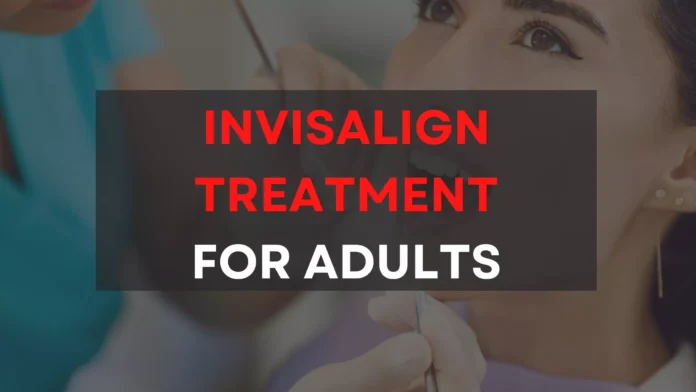Introduction
Explanation of medicolegal defense: Medicolegal defense refers to the legal protections and strategies that healthcare providers can use to defend themselves against claims of medical malpractice, product liability, and other types of legal action. This can include risk management, compliance with laws and regulations, proper documentation, communication and informed consent, and professional liability insurance.
Importance of medicolegal defense for healthcare providers: Medicolegal defense is essential for healthcare providers as it helps protect them from financial and reputational harm. These legal actions can be costly, time-consuming and can also damage the professional reputation of the healthcare provider. Medicolegal defense for healthcare providers is a critical aspect of providing quality care while minimizing the risk of legal action.
Overview of the main topics that will be covered in the article: In this article, we will cover different types of medicolegal claims, strategies for medicolegal defense, and the role of technology in medicolegal defense for healthcare providers. Additionally, we will also provide additional resources for healthcare providers to stay informed and proactive in their medicolegal defense efforts.
Types of Medicolegal Claims
Medical malpractice claims:
Medical malpractice claims are the most common type of medicolegal claim for healthcare providers. They involve allegations of negligence, errors or omissions in the provision of medical care that results in harm to the patient. Medicolegal defense for healthcare providers is critical in these types of claims as they can have serious financial and reputational consequences.
Product liability claims:
Product liability claims are another type of medicolegal claim that healthcare providers may face. These claims involve allegations that a medical device or pharmaceutical product caused harm to a patient. Medicolegal defense for healthcare providers can include strategies such as proper documentation of product usage and compliance with relevant laws and regulations.
False imprisonment claims:
False imprisonment claims involve allegations that a healthcare provider unlawfully restrained or confined a patient. Medicolegal defense for healthcare providers in these types of claims can include demonstrating that the restraint or confinement was necessary for the patient’s safety or for the safety of others and that the healthcare provider acted within the scope of their professional duties.
Defamation claims:
Defamation claims involve allegations that a healthcare provider made false or damaging statements about a patient. Medicolegal defense for healthcare providers in these types of claims can include demonstrating that the statements were true or that the healthcare provider had a qualified privilege to make the statements.
Invasion of privacy claims:
Invasion of privacy claims involve allegations that a healthcare provider improperly accessed, disclosed or used a patient’s personal information. Medicolegal defense for healthcare providers in these types of claims can include demonstrating that the healthcare provider acted in accordance with relevant laws and regulations and had a legitimate reason for accessing, disclosing or using the information.
Strategies for Medicolegal Defense
Risk management:
Risk management is a critical aspect of medicolegal defense for healthcare providers. It involves identifying, evaluating, and taking steps to minimize or mitigate potential sources of legal liability. This can include implementing policies and procedures, providing training, and conducting regular audits and reviews. By proactively managing risks, healthcare providers can reduce the likelihood of legal action and improve patient outcomes.
Compliance with laws and regulations:
Compliance with relevant laws and regulations is another important strategy for medicolegal defense for healthcare providers. This includes staying informed about changes in laws and regulations that affect healthcare practice and ensuring that policies, procedures, and documentation are in line with these laws and regulations.
Proper documentation:
Proper documentation is crucial for medicolegal defense for healthcare providers. This includes keeping accurate and detailed records of patient encounters, medical treatments, and communication with other healthcare providers. Proper documentation not only helps protect healthcare providers from legal action but also improves patient outcomes.
Communication and informed consent:
Good communication and informed consent are essential for medicolegal defense for healthcare providers. This includes clearly and effectively communicating with patients about their diagnosis, treatment options, and potential risks and benefits. Additionally, obtaining informed consent from patients before proceeding with treatment can help protect healthcare providers from legal action.
Professional liability insurance:
Professional liability insurance is another important strategy for medicolegal defense for healthcare providers. This type of insurance can provide financial protection against legal claims and can also provide access to legal representation and other resources.

Medicolegal Defense in the Digital Age
EHRs and digital documentation:
Electronic health records (EHRs) and other digital documentation are becoming increasingly important for medicolegal defense for healthcare providers. EHRs can improve the accuracy and completeness of patient records, making it easier for healthcare providers to demonstrate compliance with laws and regulations and defend against legal claims. However, it’s also important for healthcare providers to ensure that their EHR systems are secure and comply with relevant laws and regulations regarding patient data privacy.
Social media and online reputation management:
The rise of social media and online review sites has made it more important than ever for healthcare providers to manage their online reputation. Negative reviews or comments can damage a healthcare provider’s reputation and may even result in legal action. Medicolegal defense for healthcare providers in the digital age includes staying informed about their online presence and taking steps to address any negative content or reviews.
Cybersecurity and data privacy:
Cybersecurity and data privacy are increasingly important issues in medicolegal defense for healthcare providers. As healthcare providers increasingly rely on digital systems to manage patient data, it’s crucial to protect this sensitive information from unauthorized access or breaches. This includes implementing robust security measures, regularly training staff on data privacy and cybersecurity best practices, and complying with relevant laws and regulations.
Conclusion
Summary of the main points:
In this article, we discussed the various aspects of medicolegal defense for healthcare providers, including different types of medicolegal claims, strategies for medicolegal defense, and the role of technology in medicolegal defense. We highlighted the importance of risk management, compliance with laws and regulations, proper documentation, communication and informed consent, and professional liability insurance in protecting healthcare providers from legal action.
Importance of staying informed and proactive in medicolegal defense:
Medicolegal defense is an ongoing process that requires healthcare providers to stay informed about relevant laws, regulations, and trends in healthcare practice. By being proactive in their medicolegal defense efforts, healthcare providers can minimize the risk of legal action and provide better care for their patients.
Additional resources for healthcare providers:
Healthcare providers can find additional resources for medicolegal defense from professional organizations such as the American Medical Association and the American Nurses Association. Additionally, there are numerous books, articles, and online resources available that provide guidance on medicolegal defense for healthcare providers. It is always beneficial for healthcare providers to stay informed about the latest developments and best practices in medicolegal defense.
FAQs
How can healthcare providers stay informed about changes in laws and regulations that affect healthcare practice?
Staying informed about changes in laws and regulations that affect healthcare practice is crucial for healthcare providers to maintain compliance and minimize the risk of legal action. There are several ways healthcare providers can stay informed:
1. Professional organizations: Joining professional organizations such as the American Medical Association (AMA) or the American Nurses Association (ANA) can provide healthcare providers with access to updates on laws and regulations, as well as other resources and support.
2. Government websites: Government websites such as the Centers for Medicare & Medicaid Services (CMS) and the Department of Health and Human Services (HHS) provide updates on laws and regulations affecting healthcare practice.
3. Legal and compliance consulting services: Some healthcare providers may benefit from seeking the advice of legal and compliance consulting services. These services can provide detailed and specialized information on laws and regulations that are relevant to a healthcare provider’s practice.
4. Professional development and continuing education: Healthcare providers can stay informed by participating in professional development and continuing education programs. Many of these programs provide information on laws, regulations and best practices.
5. News and industry publications: Keeping up with news and industry publications can also help healthcare providers stay informed about changes in laws and regulations. They can subscribe to relevant publications, such as legal or healthcare industry publications, to stay informed about the latest developments.
6. Networking: Networking with other healthcare providers can also be a valuable resource for staying informed about changes in laws and regulations. They can connect with colleagues in their field and share information and resources.
In summary, healthcare providers can stay informed about changes in laws and regulations by joining professional organizations, visiting government websites, seeking advice from legal and compliance consulting services, participating in professional development and continuing education programs, reading relevant news and industry publications and networking with other healthcare providers.
What are the best practices for risk management in healthcare?
Risk management is an important aspect of medicolegal defense for healthcare providers, as it involves identifying, evaluating, and taking steps to minimize or mitigate potential sources of legal liability. Here are some best practices for risk management in healthcare:
1. Develop and implement policies and procedures: Having clear and concise policies and procedures in place can help healthcare providers to minimize risk and protect against legal action. These policies and procedures should be regularly reviewed and updated to ensure they are current and comply with laws and regulations.
2. Regularly conduct audits and reviews: Regularly conducting audits and reviews of policies, procedures, and documentation can help healthcare providers to identify areas of risk and take steps to mitigate them. Audits and reviews can also help to ensure compliance with laws and regulations.
3. Provide staff training: Providing staff training on risk management, laws and regulations, and best practices can help to minimize risk and improve patient outcomes.
4. Be proactive in identifying and addressing potential risks: Healthcare providers should actively identify and address potential risks in their practice. This could include conducting risk assessments, reviewing patient complaints, and monitoring key performance indicators such as infection rates.
5. Use technology to manage risk: Technology can be used to help healthcare providers manage risk. Electronic health records (EHRs) can improve the accuracy and completeness of patient records, making it easier for healthcare providers to demonstrate compliance with laws and regulations and defend against legal claims.
6. Communicate and collaborate with other healthcare providers: Communicating and collaborating with other healthcare providers can help healthcare providers to identify and address potential risks. For example, healthcare providers can share best practices, conduct joint risk assessments, or form networks to share information and resources.
In summary, the best practices for risk management in healthcare include developing and implementing policies and procedures, regularly conducting audits and reviews, providing staff training, being proactive in identifying and addressing potential risks, using technology to manage risk and communicating and collaborating with other healthcare providers.
How can healthcare providers effectively manage their online reputation?
Managing an online reputation is becoming increasingly important for healthcare providers as more patients use the internet to research and rate healthcare providers. Here are some best practices for healthcare providers to effectively manage their online reputation:
1. Monitor your online presence: Healthcare providers should regularly monitor their online presence by searching for their name, practice name, and location on search engines and social media platforms. This will help them to stay informed about what is being said about them online and respond quickly to any negative comments or reviews.
2. Respond to reviews and comments: Healthcare providers should respond to reviews and comments, both positive and negative. A prompt and professional response can help to mitigate the impact of negative comments and show that the healthcare provider is responsive to patient feedback.
3. Encourage patients to leave reviews: Encourage satisfied patients to leave reviews on online review sites. Positive reviews can help to offset any negative comments and boost a healthcare provider’s online reputation.
4. Be transparent: Be transparent and honest when responding to reviews and comments. If a mistake was made, own up to it and explain how it has been addressed.
5. Use social media strategically: Social media can be a powerful tool for healthcare providers to connect with patients and build their online reputation. By sharing relevant and interesting information and engaging with patients, healthcare providers can build trust and credibility online.
6. Consider online reputation management services: Healthcare providers can consider online reputation management services that can help them to monitor their online presence, respond to reviews, and build their online reputation.
In summary, effectively managing an online reputation for healthcare providers includes monitoring their online presence, responding to reviews and comments, encouraging patients to leave reviews, being transparent, using social media strategically, and considering online reputation management services.
How can healthcare providers ensure the security of their electronic health records?
Ensuring the security of electronic health records (EHRs) is crucial for healthcare providers, as it helps to protect sensitive patient information from unauthorized access or breaches. Here are some best practices for healthcare providers to ensure the security of their EHRs:
1. Implement robust security measures: Implement robust security measures such as firewalls, intrusion detection systems, and encryption to protect EHRs from unauthorized access or breaches.
2.Conduct regular security assessments: Regularly conduct security assessments to identify vulnerabilities and assess the effectiveness of security measures. This includes conducting penetration testing, vulnerability scanning, and regular security audits.
3. Train staff on data privacy and cybersecurity best practices: Staff training on data privacy and cybersecurity best practices is an important aspect of EHR security. This includes educating staff on how to recognize and respond to security threats, how to handle sensitive information and how to comply with relevant laws and regulations.
4. Implement access controls: Implement access controls to ensure that only authorized personnel can access EHRs. This includes using strong passwords and multi-factor authentication, and regularly monitoring and auditing access logs.
5. Have a disaster recovery plan: Having a disaster recovery plan in place can help healthcare providers to quickly and effectively respond to security breaches or other emergencies. This includes regular backups of EHRs and testing the disaster recovery plan.
6. Stay informed about laws and regulations: Stay informed about laws and regulations related to EHR security and data privacy, such as the Health Insurance Portability and Accountability Act (HIPAA), and ensure compliance with these laws and regulations.
What are the best practices for obtaining informed consent from patients?
Obtaining informed consent from patients is an important aspect of healthcare practice as it involves obtaining a patient’s agreement to a proposed medical treatment or procedure after providing them with all the necessary information about the treatment or procedure and any associated risks and benefits. Here are some best practices for obtaining informed consent from patients:
1. Provide clear and accurate information: Provide patients with clear and accurate information about the proposed treatment or procedure, including any associated risks and benefits, alternatives, and expected outcomes. This should be provided in a language that the patient can understand.
2. Allow sufficient time for the patient to ask questions and consider their options: Allow patients sufficient time to ask questions and consider their options before making a decision. This allows patients to make a well-informed decision.
3. Encourage patients to ask questions and provide clarification: Encourage patients to ask questions and provide clarification on any information that is unclear. This ensures that patients have a good understanding of the information provided.
4. Use written consent forms: Use written consent forms that clearly outline the proposed treatment or procedure, risks and benefits, and alternative options. This provides a record of the information provided to the patient and the patient’s agreement to the proposed treatment or procedure.
How can healthcare providers ensure compliance with data privacy laws and regulations?
Ensuring compliance with data privacy laws and regulations is crucial for healthcare providers to protect patient information and minimize the risk of legal action. Here are some best practices for healthcare providers to ensure compliance with data privacy laws and regulations:
1. Understand the applicable laws and regulations: Understand the laws and regulations that apply to data privacy in healthcare, such as the Health Insurance Portability and Accountability Act (HIPAA) and the General Data Protection Regulation (GDPR). This includes understanding the requirements for protecting patient information and ensuring compliance with these laws and regulations.
2. Develop and implement data privacy policies and procedures: Develop and implement data privacy policies and procedures that comply with the applicable laws and regulations. These policies and procedures should cover areas such as data collection, storage, and sharing, as well as data security and incident response.
3. Train staff on data privacy and security: Train staff on data privacy and security best practices, including how to handle patient information, how to recognize and respond to data breaches and how to comply with laws and regulations.
4. Conduct regular data privacy and security audits: Conduct regular data privacy and security audits to identify and address potential vulnerabilities in data privacy and security practices, and to ensure compliance with laws and regulations.
5. Implement robust security measures: Implement robust security measures to protect patient information from unauthorized access or breaches. This includes measures such as encryption, firewalls, and intrusion detection systems.
6. Have a data breach response plan: Have a data breach response plan in place to quickly and effectively respond to data breaches or other security incidents. This includes identifying and containing the breach, notifying affected patients, and taking steps to prevent future breaches.
In summary, ensuring compliance with data privacy laws and regulations requires healthcare providers to understand the applicable laws and regulations, develop and implement data privacy policies and procedures, train staff on data privacy and security best practices, conduct regular data privacy and security audits, implement robust security measures, and have a data breach response plan in place.
What are the most effective ways for healthcare providers to manage the cost of professional liability insurance?
Managing the cost of professional liability insurance can be a significant challenge for healthcare providers. Here are some effective ways for healthcare providers to manage the cost of professional liability insurance:
1. Shop around for insurance: Compare rates and coverage from different insurance providers to find the best deal. It’s important to find an insurance plan that meets the specific needs of the healthcare provider and that also fits within their budget.
2. Implement risk management strategies: Implementing risk management strategies, such as implementing protocols to reduce medical errors and improving patient communication, can help to reduce the likelihood of a malpractice claim, which can in turn lower insurance costs.
3. Participate in continuing education: Participating in continuing education programs can help healthcare providers to stay current on best practices and reduce the risk of malpractice claims. This can also result in lower insurance costs.
4. Consider alternative risk financing options: Alternative risk financing options, such as self-insurance, can be more cost-effective than traditional insurance policies. These options can be especially helpful for healthcare providers that have a good claims history and are able to manage their own risk.
5. Look into group insurance options: Some healthcare providers, particularly those in solo practice or small groups, may benefit from group insurance options. These plans can often offer more favorable rates than individual policies.
6. Review your coverage regularly: Review your coverage regularly to ensure that it is still adequate for your needs and that it is still competitively priced. If a better option is available, it may be worth switching to a new insurance policy.
In summary, effective ways for healthcare providers to manage the cost of professional liability insurance include shopping around for insurance, implementing risk management strategies, participating in continuing education, considering alternative risk financing options, looking into group insurance options, and reviewing your coverage regularly.
How can healthcare providers best prepare for and respond to a medical malpractice lawsuit?
Medical malpractice lawsuits can be stressful and costly for healthcare providers. Here are some best practices for healthcare providers to prepare for and respond to a medical malpractice lawsuit:
1. Understand the legal process: Understand the legal process, including the statute of limitations, which is the time limit for filing a lawsuit, and the steps involved in the litigation process. This will help healthcare providers to be better prepared for the case.
2. Keep accurate and detailed records: Keep accurate and detailed records of all patient interactions, including diagnosis, treatment, and communication with other healthcare providers. This can help to demonstrate that the healthcare provider met the standard of care and can be used as evidence in a medical malpractice lawsuit.
3. Maintain professional liability insurance: Maintain professional liability insurance, which can help to cover the costs of a medical malpractice lawsuit. Healthcare providers should ensure that their coverage is up-to-date and adequate for their needs.
4. Seek legal advice: Seek legal advice early in the process, as this can help healthcare providers to better understand their rights and obligations, and to develop an effective legal strategy.
5. Be cooperative and responsive: Be cooperative and responsive when communicating with the patient and their attorney. This can help to minimize the risk of a lawsuit and to resolve disputes quickly and effectively.































